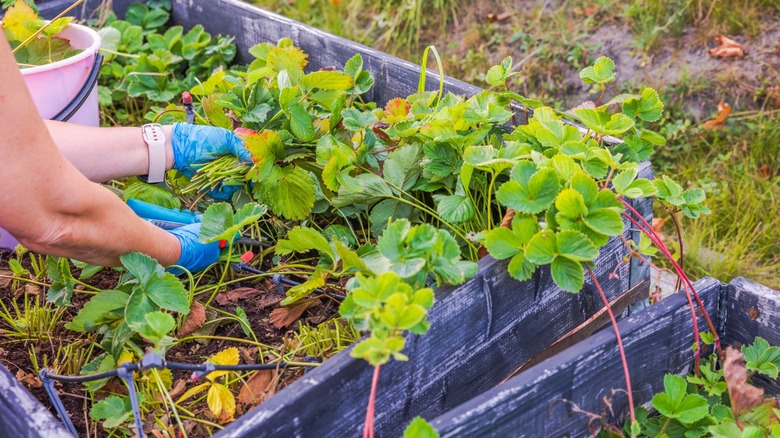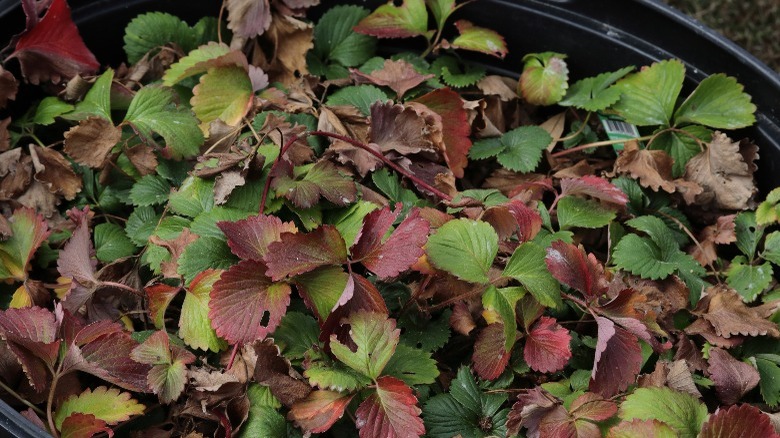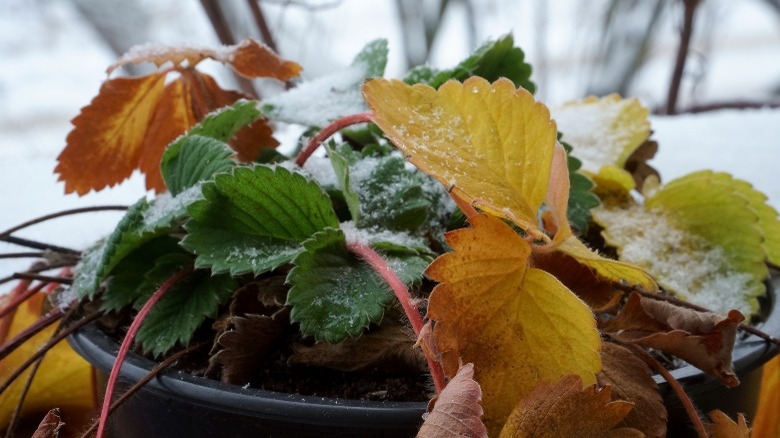How To Prep Strawberry Plants For Winter (& Common Mistakes To Avoid)
When you've had a successful year with your strawberry plants (Fragaria × ananassa), the last thing you want is to let them die over the winter season. While many hardy cultivars are ideal for northern areas in USDA Zone 4, most strawberry plants require some type of protection from the cold via mulching. With the correct preparation, you can easily overwinter your strawberries to continue enjoying their bounty come next spring.
Strawberries are perennial plants that start to become dormant as the days shorten in the autumn. This period of dormancy helps them survive the winter, but they also require protection from temperatures colder than 15 degrees Fahrenheit. By the time you start prepping your strawberry plants for winter, the harvest season will be long over. You will have had time to remove blossoms from your strawberry plants for a juicy harvest next year. This renovation process allows these perennial plants to get ready for colder weather and keep producing for up to three years. But the final piece for prepping your strawberry plants happens in late fall with careful mulching.
Steps for getting strawberries ready for winter
While snow works well to insulate strawberry plants from the cold, it's often an unreliable option for mulching. Instead, use a clean, dry straw that's free of weed seeds as mulch. Recommended options for the best type of mulch to help your strawberry plants thrive include oat, wheat, or soybean straw. Dry corn stalks chopped into pieces will also work if you have them. When applying mulch on top of your strawberries, shake out larger clumps of straw to create the best insulation. You want to ensure a depth of 4 to 6 inches, but this will flatten with time to about 2 inches.
In cases where strawberry plants are growing in raised beds, strawberry pyramids, or jars, temperatures can be 5 degrees Fahrenheit colder than the ground. Raised beds require a thicker application of straw than ground plantings, about 6 to 8 inches. To overwinter strawberry plants in jars, you need to store them in an unheated garage through the colder months.
Common mistakes to avoid when overwintering
A big mistake that many backyard strawberry growers make is not letting their plants harden off before they put them to bed. Hardening off, or cold acclimatization, is a process that occurs after the first few frosts. Essentially, the plants need a little time to get used to the colder temperatures, like a bear going into hibernation. Signs that your plant is becoming dormant include the leaves turning light red and green and the plant visibly flattening out.
If you start mulching too soon, you can disrupt this important acclimatization process, leading to dead or weak plants in the spring. Wait until the plant has experienced several days of freezing temperatures between the low 30s and high 20s. This typically occurs in middle to late November but could be earlier for areas further north.
Another problem you want to avoid is using the wrong type of mulch. Straw is generally best for strawberry plants, and it's easy to remember, given their name. While your abundance of autumn leaves might tempt you, you should not use them to protect your strawberry plants. Leaves and grass clippings form into sheets of material that trap air and moisture. Plus, wet leaves create the perfect conditions for the crowns of your plant to decay. If you remember these details, you can get your strawberry plants through the winter with little issue. Prepping them for winter is an important part of how to grow and care for a strawberry plant.


